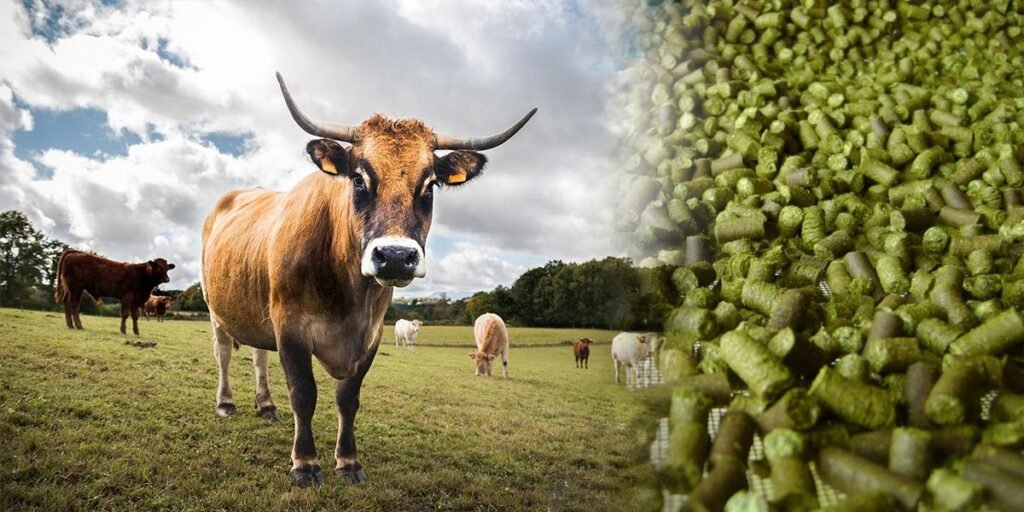Selecting the right grass pellet machine is crucial for efficient and cost-effective production of grass pellets, whether for animal feed or biomass fuel. With various options available in the market, it’s essential to consider several factors to ensure you choose a machine that best suits your needs. This comprehensive guide will walk you through the key considerations when selecting a grass pellet machine.
1. Production Capacity
One of the most critical factors in choosing a grass pellet machine is its production capacity. Consider your current needs and potential future expansion:
- Small-scale production (50-100 kg/hour): Suitable for home use or small farms.
- Medium-scale production (200-500 kg/hour): Ideal for medium-sized farms or small businesses.
- Large-scale production (1-5 tons/hour): Appropriate for commercial operations or large farms.
Ensure the machine’s capacity aligns with your production goals to avoid underutilization or bottlenecks in your process.
2. Raw Material Compatibility
While primarily designed for grass, many grass pellet mills can process various materials. Consider the types of raw materials you plan to use:
- Fresh grass
- Dried grass
- Hay
- Straw
- Agricultural residues
- Wood sawdust (for mixed pellets)
Choose a machine that can handle the specific materials you intend to process. Some machines offer greater versatility, which can be beneficial if you plan to work with multiple raw materials.

3. Pellet Size and Quality
Different applications may require specific pellet sizes:
- 6-8 mm: Common for animal feed pellets.
- 8-10 mm: Often used for biomass fuel pellets.
Ensure the machine can produce pellets of the desired size and quality. Look for features that contribute to pellet durability and consistency.
4. Power Source
Grass pellet machines come with various power options:
- Electric: Most common, suitable for areas with reliable electricity supply.
- Diesel: Ideal for remote locations or areas with unreliable electricity.
- Gasoline: Offers portability but may have higher operating costs.
- PTO (Power Take-Off): Can be attached to tractors, suitable for farm use.
Choose a power source that aligns with your location’s infrastructure and operational preferences.
5. Die and Roller Configuration
The die and roller system is crucial for pellet formation:
- Flat die: Generally easier to maintain and replace.
- Ring die: Often more efficient and suitable for higher production volumes.
Consider the availability of replacement dies and rollers, as these are wear parts that will need periodic replacement.
6. Durability and Build Quality
Invest in a machine built to last:
- Look for high-quality materials like stainless steel components.
- Check for robust construction that can withstand continuous operation.
- Consider machines with dust-proof and moisture-resistant features.
A durable machine may cost more upfront but can save money in the long run through reduced maintenance and longer lifespan. (Related post: alfalfa granulating machine)
7. Ease of Operation and Maintenance
User-friendly features can significantly impact your day-to-day operations:
- Intuitive control panels.
- Easy access to parts for cleaning and maintenance.
- Automatic lubrication systems.
- Safety features like emergency stop buttons.
Consider the level of technical expertise required to operate and maintain the machine.
8. Energy Efficiency
Energy costs can significantly impact your operational expenses:
- Look for machines with high energy efficiency ratings.
- Consider models with variable speed drives to optimize energy use.
- Check if the machine has energy recovery systems.
An energy-efficient machine can lead to substantial savings over time, especially for large-scale operations.
9. Cooling and Packaging Systems
For a complete production line, consider machines that offer:
- Integrated cooling systems to properly cool pellets after production.
- Packaging options for efficient bagging of the final product.
These features can streamline your production process and improve overall efficiency.
10. Brand Reputation and After-Sales Support
Choose a reputable manufacturer known for quality and reliability:
- Research customer reviews and testimonials.
- Check the manufacturer’s history and experience in pellet machine production.
- Ensure availability of spare parts and technical support.
- Look for warranties and service agreements.
Good after-sales support can be crucial for maintaining your machine and minimizing downtime.
11. Customization Options
Some manufacturers offer customization options:
- Ability to adjust compression ratios.
- Interchangeable dies for different materials or pellet sizes.
- Options to integrate with existing equipment.
Customization can help tailor the machine to your specific needs.
12. Compliance and Certification
Ensure the machine meets relevant safety and quality standards:
- Look for CE certification for machines sold in Europe.
- Check for compliance with local regulations and industry standards.
- Consider machines with ISO certifications for quality management.
Compliance can be crucial for legal operation and may be required by some buyers of your pellets.
13. Cost and Return on Investment
While price is an important factor, consider the total cost of ownership:
- Initial purchase price.
- Installation costs.
- Operating costs (energy, labor, maintenance).
- Expected lifespan of the machine.
- Potential revenue from pellet production.
Calculate the return on investment to ensure the machine aligns with your business goals.
14. Scalability
Consider your future growth plans:
- Can the machine be easily upgraded or expanded?
- Is it part of a modular system that allows for easy capacity increases?
- Will the manufacturer support future upgrades or additions to your production line?
Choosing a scalable solution can save costs in the long run as your business grows.
Conclusion
Choosing the right grass pellet machine requires careful consideration of multiple factors. By evaluating your specific needs in terms of production capacity, raw material compatibility, pellet quality, and operational requirements, you can select a machine that will serve you well for years to come. Remember to balance the initial cost with long-term benefits and operational efficiency. Consulting with experienced manufacturers or industry experts can provide valuable insights to help you make an informed decision. With the right grass pellet machine, you can efficiently produce high-quality pellets for feed or fuel, contributing to sustainable practices in agriculture and energy production.










